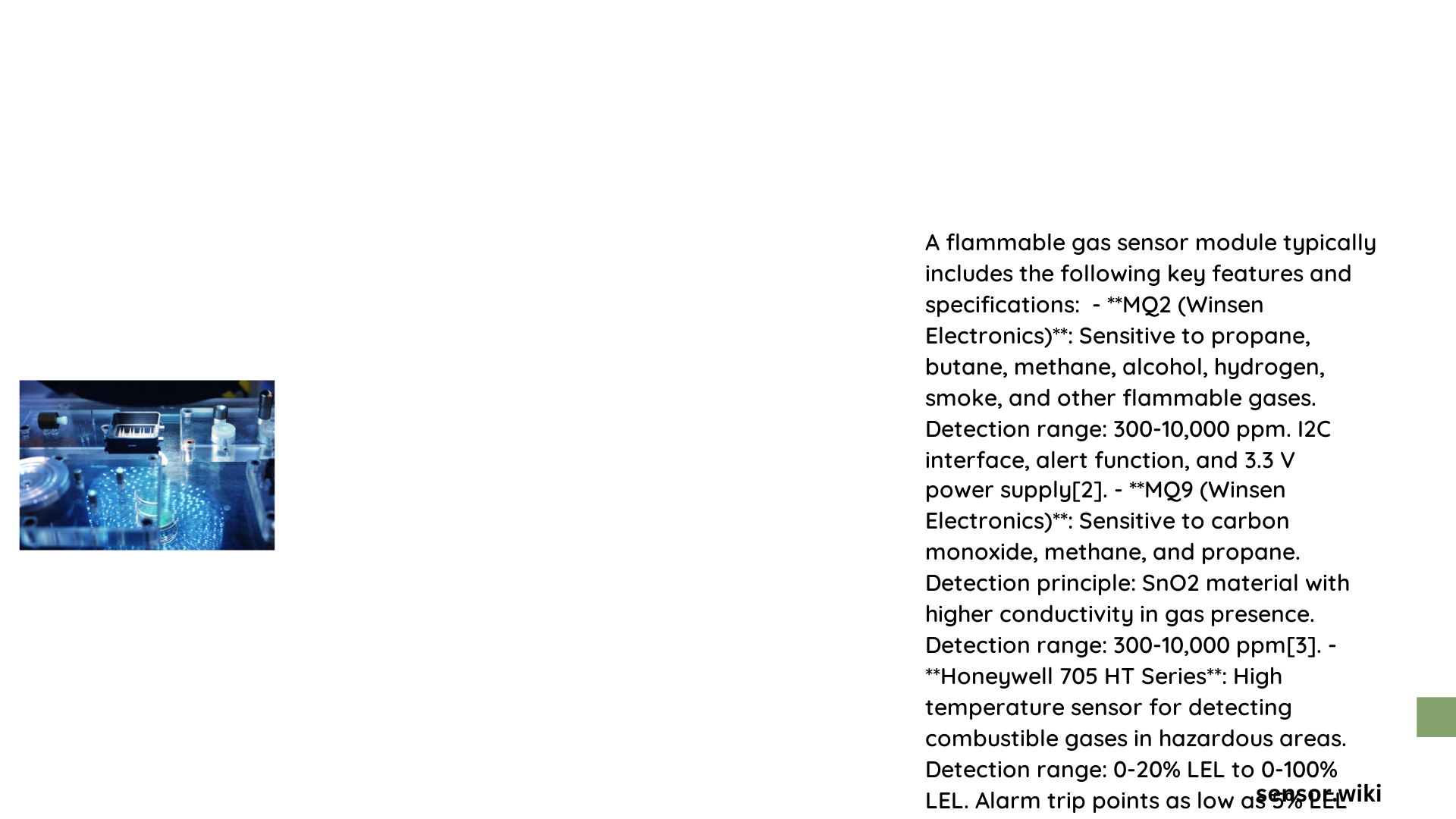Flammable gas sensor modules are critical electronic components designed to detect and measure combustible gases in various environments, providing essential safety monitoring for industrial, residential, and commercial applications. These sophisticated devices utilize advanced sensing technologies to identify potential gas leaks, prevent potential explosions, and ensure environmental and human safety through precise gas concentration measurements.
What Are Flammable Gas Sensor Modules?
Flammable gas sensor modules are specialized electronic devices engineered to detect and quantify combustible gases in different concentrations. These modules typically incorporate semiconductor-based sensing elements that change electrical resistance when exposed to specific gas molecules.
Key Components of Gas Sensor Modules
| Component | Function | Characteristics |
|---|---|---|
| Sensing Element | Detects gas molecules | Semiconductor-based material |
| Heater Circuit | Maintains optimal operating temperature | Typically 5V ± 0.1V |
| Signal Conditioning Circuit | Converts sensor readings | Provides analog/digital output |
How Do Flammable Gas Sensor Modules Work?

Flammable gas sensor modules operate through a sophisticated mechanism of resistance change:
- Gas Molecule Interaction
- Sensing element absorbs gas molecules
- Electrical resistance changes proportionally to gas concentration
-
Generates measurable electrical signal
-
Signal Processing
- Analog signal converted to digital reading
- Microcontroller interprets concentration levels
- Triggers alarm or control mechanism if threshold exceeded
What Are the Technical Specifications?
MQ-5 Gas Sensor Specifications
- Detection Range: 300-10,000 ppm for CH4 and C3H8
- Operating Temperature: 20°C ± 2°C
- Heater Voltage: 5.0V ± 0.1V
- Circuit Voltage: ≤24V DC
- Sensitivity: Rs(in air)/Rs(in 2000ppm C3H8) ≥ 5
MQ-2 Gas Sensor Specifications
- Detection Range: 300-10,000 ppm for LPG, propane, methane
- Operating Temperature: -20°C to 50°C
- Heater Voltage: 5V ± 0.1V
- Humidity Tolerance: Less than 95% RH
- Heater Consumption: ≤900mW
What Factors Affect Sensor Performance?
Several critical factors influence flammable gas sensor module performance:
- Environmental Conditions
- Temperature variations
- Humidity levels
-
Oxygen concentration
-
Gas Characteristics
- Molecular composition
- Concentration levels
- Interaction with sensing material
What Are Calibration Procedures?
Calibration Steps
- Preheat sensor for 24-48 hours
- Connect to standard test circuit
- Adjust load resistance
- Expose to calibration gas
- Measure output voltage
- Verify sensitivity
What Are Potential Challenges?
- Environmental Interference
- Corrosive gas exposure
- Organic silicon steam
-
Extreme temperature fluctuations
-
Maintenance Requirements
- Periodic recalibration
- Sensor drift compensation
- Regular performance verification
Recommended Applications
- Industrial safety monitoring
- Residential gas leak detection
- Laboratory environmental control
- Automotive fuel system monitoring
- HVAC safety systems
Cost Considerations
- Sensor Module: $5-$25
- Installation: Minimal additional costs
- Maintenance: Low recurring expenses
- Lifespan: Approximately 10 years with proper care
Conclusion
Flammable gas sensor modules represent a critical technology for detecting potentially dangerous combustible gases across multiple sectors. Understanding their technical specifications, operational principles, and maintenance requirements ensures optimal performance and safety.
